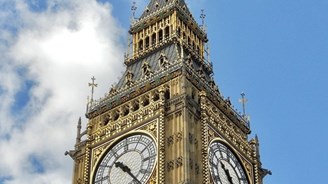The Confusing World of Pension Tax Savings

Tax aspects of pensions has been a hot topic in 2023, with the focus to date being on the Spring Budget announcements some of which are now reflected in Finance (No.2) Act 2023. Those measures included an increased Annual Allowance for 2023/24 and a plan to abolish the lifetime allowance (LTA) from 6 April 2024.
As an interim measure, the LTA excess charges are removed from 6 April 2023, with benefits above the LTA instead being chargeable to marginal rate income tax when paid.
Draft legislative clauses for the new pensions tax regime following the LTA abolition have now been published for a technical consultation and will feature in a future article.
The purpose of this article is however about getting the tax relief basics right.
There are two different ways of applying tax relief for employee’s pension contributions - and they are often misunderstood or confused. It is very important that whoever is doing the payroll knows what type of tax relief to use (Relief at Source or Net Pay Arrangement) when calculating the member’s contributions. If payroll is not set up correctly, the wrong employee contributions will be taken.
It is also critical that taxpayers and their advisers in completing Self-Assessment Returns for employees and directors understand when entries need to be included to obtain the correct tax relief and when they do not.
The explanations below will demonstrate this and are based on the member of staff’s contribution of 5% of their pay and the basic tax rate of 20%.
Relief at source
'Relief at source' is suitable for all employers, no matter what their staff earn, and it is the better choice for employers who have lower paid staff who earn less than £12,570.
Using this method, the employer deducts 4% (net) from their staff’s pay as their contribution into the pension scheme. The member of staff pays tax on all of their pay including this pension contribution. The pension provider claims 1% tax back from HMRC and they add this to the member of staff’s pension so a total of 5% of their pay is paid into the scheme.
For example, using English tax rates, a member who wishes to make a relievable pension contribution of £100 actually contributes £80 via deduction by the employer from their net pay. That £80 is passed on by the employer to the pension scheme provider. The pension scheme provider then claims the basic rate tax relief due of £20 from HMRC which is added by the provider to the pension pot of the individual.
Overall, this means the member of staff has to pay less into their pension from their take home pay but the overall amount they get in their pension scheme is not affected.
Higher rate taxpayers
Any staff who are higher rate taxpayers (currently earning over £50,270) will have to claim their additional tax relief directly from HMRC on a Self-Assessment form.

This is done by completing Box 1 (page TR3) above in the Self-Assessment Return. Tax calculation software will then calculate the correct additional higher or additional rate relief.
Box 3 is only for ‘supposed’ unusual situations such as where an Employer has not given any tax relief on pension contributions in error. By completing Box 3, tax calculation software will then calculate the full tax relief for the individual.
Net pay arrangements
With net pay arrangements the employer deducts 5% from a member of staff’s pay to put into their pension scheme. They then only pay tax on their remaining pay. This method is often used with defined benefit schemes.
Higher rate taxpayers
Higher and additional rate taxpayers do not have to complete a Self-Assessment tax return to get basic or additional relief on workplace pensions under net pay arrangements. This is so even where for payroll purposes the individual is a basic rate taxpayer but is overall a higher or additional rate taxpayer as the tax calculation method automatically reduces the overall tax bill.
Common mistakes
HMRC have now flagged in their latest Employer Bulletin (August 2023) some common mistakes when operating these two different methods. A critical area to always check is that the employer and the pension provider agree on the type of tax relief scheme in operation but even when that communication appears to be working it can still go wrong! As HMRC points out:
‘… when an employer makes the mistake of reporting a relief at source scheme through RTI in the data fields for a net pay scheme. This results in providing tax relief through payroll incorrectly, in addition to the tax relief correctly provided via the pension scheme provider and HMRC Pension Scheme Services (PSS). The excess relief provided is an employer payroll failure, and the employer is liable for the tax under deducted and remitted to HMRC.
Any employer reporting pension contributions as net pay through RTI should check with their scheme provider on how the scheme is registered. If pension contributions have been reported through RTI incorrectly they should correct this immediately.
Any errors identified from previous periods should be reported through the HMRC digital disclosure facility…
Another example could be when many businesses have adopted salary sacrifice arrangements linked to pension contributions. In such cases the employee ceases to make employee contributions, but contractually sacrifices a similar proportion of earnings in favour of an additional employer contribution to their pension. Effectively, to an outcome of relief via payroll similar to a net pay arrangement.
Every employer provides a report of employee and employer pension contributions to their pension scheme provider. If they accidently report additional employer contributions linked to a salary sacrifice as employee contributions, then the relief at source scheme provider will claim further undue relief from HMRC PSS. In these cases, even though the employer provided an inaccurate report to the pension scheme provider, the pension scheme provider is deemed legally responsible for the over claimed relief under Reg 10(5) of registered pension schemes (relief at source) regulations 2005 (SI3448 of 2005).
The employer must inform the pension scheme provider that their reports have been inaccurate, and the pension scheme provider must contact HMRC PSS if they have claimed too much relief at source for pension scheme members.’
For further information from HMRC on Employment and other matters - you can access the latest Employment Bulletin.
How Mercia can help
For a more detailed consideration and analysis of fundamental and topical pensions savings tax issues Pat Nown will be delivering her Pensions Savings - the Tax issues on 12 December on Mercia Live.




